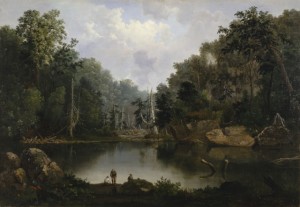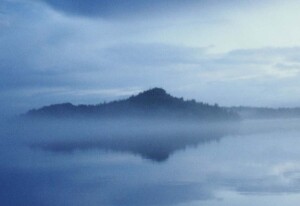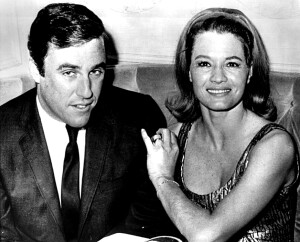![Great Skua (Stercorarius skua). Illustration by George Boorujy [Source: The Guardian]](http://i.guim.co.uk/img/static/sys-images/Guardian/Pix/pictures/2015/7/17/1437153418349/0098c03e-3e58-4bab-afa1-508184bbacf6-bestSizeAvailable.jpeg?w=620&q=85&auto=format&sharp=10&s=89a556a922d72cb4c6fa2a2ac693b93c)
Great Skua (Stercorarius skua). Illustration by George Boorujy [Source: The Guardian]
Stephen Moss is a naturalist, writer and broadcaster, based at the BBC Natural History Unit. He writes the monthly Birdwatch column for The Guardian. His July 19 column whets my imagination for seabirds and islands in the northern-most reaches of the British Isles:
The bird came out of the sun like a second world war bomber, lumbering towards me before swerving off at the very last moment, leaving me breathless and shaken. That’ll teach me for getting too near its nest, I thought. For somewhere in the marshy ground alongside the boardwalk there was a small, fluffy chick, in need of protection from intruders.Great skuas are impressive birds. With their dark brown plumage and broad wings they look rather like a cross between a buzzard and a gull, with twice as much aggression as either. They are also one of the rarest birds, globally speaking, that you will ever see in Britain. For well over half the world population – roughly 10,000 pairs – breeds in Scotland, most on Shetland, where they are known by the Old Norse name of “bonxie”.
In the past few weeks I’ve been dive-bombed by bonxies on two of Britain’s most beautiful islands: Foula, west of Shetland, and Handa, off the coast of Sutherland. Foula was once known as “Ultima Thule” – the edge of the world – and was the location for Michael Powell’s 1937 film of the same name. It claims to be the most remote inhabited island in Britain, and although the people of Fair Isle might dispute this, the sense of isolation as we made the two-hour boat journey across to the island was palpable.
Foula itself is unexpectedly green and, on this rare sunny day, rather stunning. Before landing, we made a circuit around the island, whose enormous cliffs – second only to St Kilda – rose dauntingly above us, accompanied by the ringing sound of seabirds. Once on land we took a circular walk through damp meadows full of flowers, past a loch where no fewer than 700 bonxies were bathing or loafing around in the afternoon sunshine. A rising wind made the journey back rather less enjoyable, as I successfully fought against impending seasickness while the boat’s skipper battled through heavy seas.
A week or so later, my trip to Handa, as leader of a Summer Birds course run by Aigas Field Centre, was much easier, as the ten-minute boat trip took us to an island paradise thronged with birds. As we landed on the beach, red-throated divers flew around above our heads, uttering their curious calls. Alongside the the path red grouse called from the heather, snipe drummed overhead, and both great and Arctic skuas rose up from their nests, eyeing us with wary suspicion.
AdvertisementCompared to the bulky great skua, the Arctic skua is a sleek, streamlined fighter jet. Both pale and dark phase birds were here: the latter chocolate brown and the former yellowish-white below. They look very different, yet are genetically identical, and happily interbreed in mixed pairs.
Handa may be small – just one square mile in area – but it still takes plenty of time to walk around, especially as we kept stopping to appreciate the seabird colonies on the spectacular cliffs. Guillemots and razorbills, fulmars and puffins – the prize attraction for most visitors – were all busy nesting, with chicks demanding a constant supply of food from their parents. Dragging ourselves away was not easy, but as we did so the great and Arctic skuas staged a fly-past, as if seeing us off the island, so they could resume their lives unseen and untroubled by our presence.


![Sandhill cranes land on Platte River sandbar roosts west of Rowe Sanctuary’s Iain Nicolson Audubon Center southwest of Gibbon, Nebraska. [Photo by Lori Porter| Kearney Hub]](https://www.ghostturtles.com/wp-content/uploads/2015/03/sandhill_cranes_kearneyhub_032015-300x225.jpg)
![An endangered Whooping crane takes flight. Yhe large bird has a 7-foot wingspan. It is all white except for black wing tips and face markings. In this photo its long neck stretches forward; its wings sweep upward; and its black legs trail straight behind it. [Source: International Crane Foundation]](https://www.ghostturtles.com/wp-content/uploads/2023/03/Whooping-crane-eastern-ICF-080622-300x157.jpg)

![Mark Willis peruses a 1745 volume by Voltaire at a bouquiniste book stall on the banks of the Seine in Paris. He wears a brown leather jacket and checkered flat cap. He holds the open book in his hands. Rows of old books are seen on shelves behind him. [2005 photo by Ms. Modigliani]](https://www.ghostturtles.com/wp-content/uploads/2023/03/mw_bouquiniste_05-300x225.jpg)


